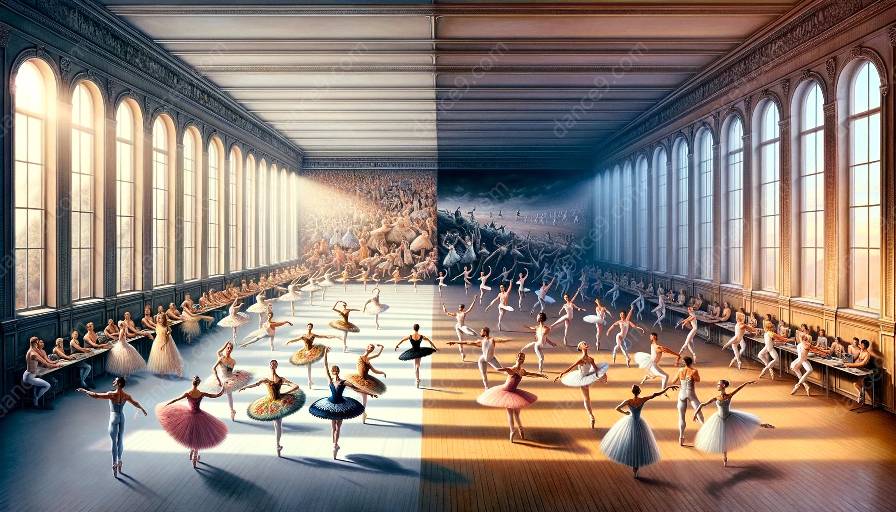The Romantic period in ballet history marked a significant shift in style, technique, and storytelling. This era brought forth several key elements that have had a lasting impact on the art form. Understanding these elements through a comparative study of different ballet styles and a deep dive into ballet history and theory can provide valuable insights into the evolution of ballet as an art form.
Key Elements of the Romantic Period in Ballet History
Ethereal Themes and Storytelling
The Romantic period in ballet is characterized by ethereal and supernatural themes that captured the imagination of audiences. Ballets during this era often featured supernatural creatures, tragic love stories, and medieval settings, evoking a sense of whimsy and otherworldly beauty.
Pointe Technique
The introduction and popularization of pointe technique is a defining element of the Romantic period. Ballerinas began to dance on their toes, creating an appearance of weightlessness and grace that became synonymous with the era.
Emphasis on Emotion and Expression
Romantic ballet placed a greater emphasis on conveying emotion and storytelling through movement. Dancers sought to express a range of nuanced emotions, from love and longing to despair and ethereal enchantment.
Costume and Set Design
The Romantic period saw a departure from the ornate, elaborate costumes and sets of the previous era. Instead, ballets embraced simpler, more ethereal designs that reflected the otherworldly themes of the narratives.
Music and Composers
The Romantic period in ballet history witnessed the collaboration between choreographers and renowned composers, resulting in iconic ballet scores that continue to enchant audiences to this day. Composers such as Tchaikovsky and Chopin created evocative and emotionally rich music that perfectly complemented the themes of Romantic ballets.
Comparative Study of Different Ballet Styles
A comparative study of different ballet styles allows for a deeper understanding of the evolution and diversification of ballet as an art form. By exploring the unique characteristics of ballet styles across different eras and regions, one can gain insights into the influence of cultural, social, and artistic factors on the development of ballet.
Comparing ballet styles such as Romantic, Classical, Neoclassical, and Contemporary can reveal how choreography, music, themes, and technique have evolved over time. Understanding the distinctions and commonalities between these styles provides a rich tapestry of knowledge that enhances appreciation for the breadth and depth of ballet as a performing art.
Ballet History and Theory
An exploration of ballet history and theory offers a comprehensive view of the art form's evolution, from its origins to the present day. It delves into the cultural, social, and artistic contexts that have shaped ballet, as well as the theoretical principles that underpin its techniques and aesthetics.
Studying ballet history and theory illuminates the contributions of iconic choreographers, dancers, composers, and designers, shedding light on the pivotal moments and innovations that have propelled ballet forward. It also provides a framework for understanding the stylistic shifts, thematic trends, and technical advancements that have defined different periods in ballet history.





























